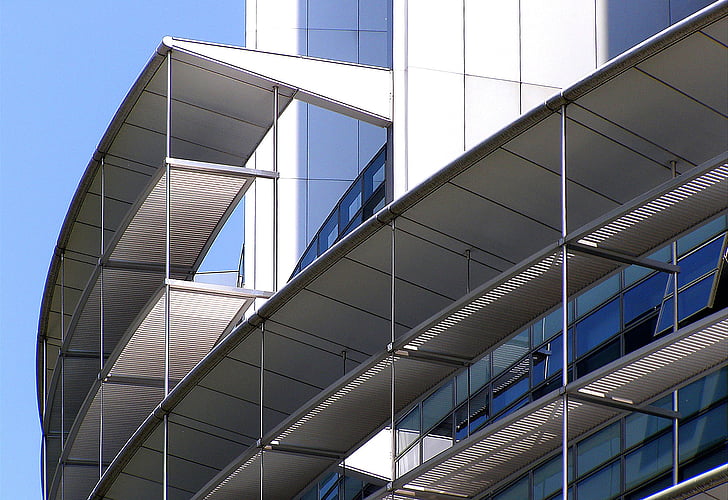In today’s architectural landscape, the choice of materials plays a pivotal role in shaping both the aesthetics and functionality of buildings. One material that has steadily gained popularity in modern building designs is solid aluminium cladding. Known for its durability, versatility, and sleek appearance, solid aluminium cladding offers a wide array of benefits that make it a prime choice for architects, designers, and builders alike. In this blog, we will explore the key advantages of using solid aluminium cladding in contemporary construction projects and why it’s becoming an essential element in modern architecture.
1. Durability and Strength
Solid aluminium cladding is renowned for its exceptional durability and strength. Unlike other cladding materials that may degrade over time due to environmental exposure, aluminium is resistant to corrosion, rust, and warping. This makes it ideal for buildings in harsh climates, where exposure to rain, sun, or salt can be a concern. Aluminium can withstand extreme temperatures and adverse weather conditions, ensuring that the building’s exterior remains intact and visually appealing for years.
In addition to its natural strength, aluminium can be treated with various finishes that enhance its protective qualities, making it even more resilient. This durability reduces the need for frequent maintenance or replacement, offering long-term cost savings for building owners.
2. Lightweight and Easy to Install
One of the standout features of solid aluminium cladding is its lightweight nature. Compared to heavier materials like stone or concrete, aluminium cladding is much easier to handle, transport, and install. This makes it an excellent choice for both new constructions and renovation projects.
Because of its reduced weight, solid aluminium cladding places less strain on the building’s structure, reducing the need for complex support systems. This can lead to faster installation times and reduced labor costs, which are crucial factors in large-scale projects where time and budget are of the essence.
3. Versatility in Design
In modern architecture, aesthetic appeal is just as important as functionality, and solid aluminium cladding excels in this area. Aluminium is an incredibly versatile material that can be molded into various shapes and sizes, allowing architects to get creative with their designs. Whether you want sleek, minimalistic lines or bold, geometric patterns, aluminium cladding can be customized to fit your vision.
Moreover, solid aluminium cladding is available in a wide range of colors and finishes. From brushed and polished surfaces to powder-coated or anodized finishes, there are endless possibilities for achieving the desired look. This flexibility in design makes aluminium cladding an excellent choice for buildings with unique architectural demands, such as commercial complexes, modern homes, or urban high-rises.
4. Sustainability and Eco-Friendliness
Sustainability is a growing concern in the construction industry, and solid aluminium cladding offers a solution that aligns with eco-friendly building practices. Aluminium is one of the most recyclable materials available. It can be recycled repeatedly without losing its structural integrity or quality. By using aluminium cladding, builders contribute to reducing waste and minimizing the environmental impact of their projects.
Additionally, aluminium’s lightweight nature means that less energy is required to transport and install it, further reducing the carbon footprint of a construction project. Aluminium cladding can also contribute to the energy efficiency of a building by providing excellent thermal insulation, helping to regulate indoor temperatures and reducing the need for excessive heating or cooling.
5. Fire Resistance and Safety
In today’s world, building safety is a paramount concern, and solid aluminium cladding provides peace of mind when it comes to fire resistance. Unlike materials that can easily catch fire or release toxic fumes, aluminium cladding is non-combustible and does not contribute to the spread of flames. This makes it an ideal material for buildings that prioritize safety, particularly in urban areas or commercial structures where fire regulations are strict.
When combined with appropriate fire-resistant treatments, solid aluminium cladding provides an additional layer of protection, enhancing the overall safety profile of a building. This is especially important in high-rise constructions, where fire risks can be more severe.
6. Low Maintenance
One of the practical advantages of solid aluminium cladding is its low maintenance requirements. Unlike wood, which needs to be stained or painted regularly, or stone, which can accumulate dirt and grime, aluminium cladding requires minimal upkeep. Most of the time, a simple cleaning with water and mild detergent is enough to maintain its appearance.
Additionally, aluminium is resistant to UV rays, so its color won’t fade or deteriorate over time, even when exposed to direct sunlight. This low-maintenance feature not only saves time and effort but also reduces the long-term costs associated with maintaining the building’s exterior.
7. Enhanced Weatherproofing and Thermal Efficiency
Another crucial benefit of solid aluminium cladding is its ability to provide excellent weatherproofing. The tight fit and seal offered by aluminium cladding help protect the building from water infiltration, wind, and moisture. This helps prevent issues like mold growth, structural damage, or interior leaks, ensuring the building remains in pristine condition even in Melbourne’s often unpredictable weather.

